I actually struggled a considerable deal at the initial phase, as I contemplated looking back at the illustrative style of my older works prior to university and try explore the relationship my artwork may hold with commercial interests. I initially took off on this idea by creating a series of wire sculptures of insects and spiders. Though the whole process felt extremely lacking.
Spider #1 (2012)
Mayfly (2012)
Spider #2 (2012)
Cockroach (2012)
However, after a fruitless attempt of a survey and a relatively in-depth discussion with a tutor, I decided this was unnecessary to explore (from this point, at least). Instead, I chose to explore a growing interest in some media I more recently looked into and attempted to see what I could develop from there.
Throughout my first year, I had produced a series of stylised sketches of tutors and peers during lectures. There was something about this chosen point in time and place where I felt there was something more real in drawing the people when they were not aware of being drawn. For me, their expressions often felt more genuine at that point. Despite the former lack of satisfaction in exploring the media back in college, I decided to turn back to print-making and the process of lino-cutting, as this seemed appropriate in relation to how I drew the people for these sketches.
Andrew (2012)
Emily (2012)
This style was something I developed from my experience in seeing numerous works produced by a group of artists referred to as the Vorticists. Vorticism was a rather short-lived artistic movement that started in the early 1900s but declined by the early years of the First World War. With elements of Cubism present in some of the artists' works, many of them produced figures possessing angular forms.
Becci (2012)
Katie (2012)
Tom (2012)
I also went on to explore the potential to lino-cutting in other drawings of mine.
Peace of Mind (2012)
This was taken further after my trip into Madrid, where I was able to go into Museo del Prado. Here, I managed to re-establish an interest in classical art and apply this into my modernist-inspired drawing style. The result is something I'd like to consider comparable to the works of Eric Gill.
The Dead Christ Supported by an Angel (1646-1652)
by Alonso Cano (1601-1667)
Drawn interpretation of Cano's painting.
Lino-cut from drawing.
Interestingly enough, although the printed piece may be the usual expected outcome, I was more invested in the production of the lino-cut itself. I feel that the main reason drawing and lino-cutting seem to work so closely for me is because my drawing technique focused on form, particularly since some of my drawing styles have been influenced by sculptors.
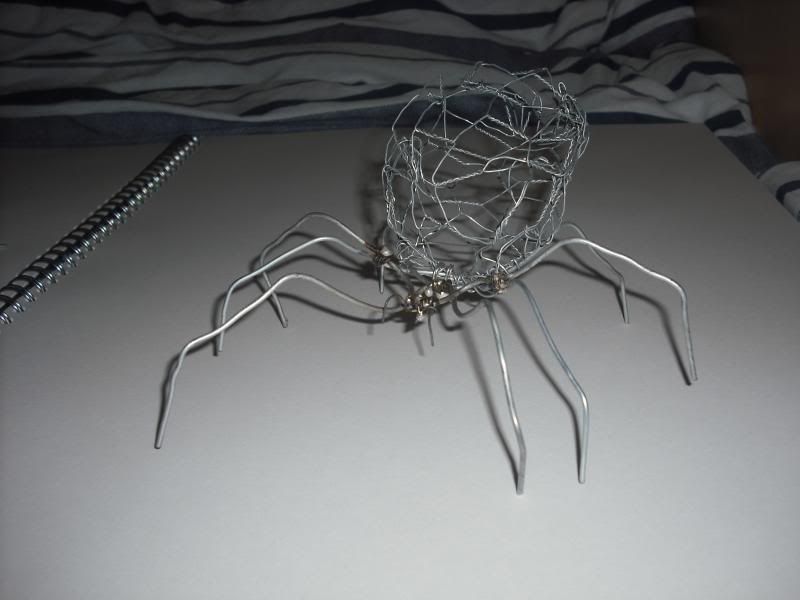
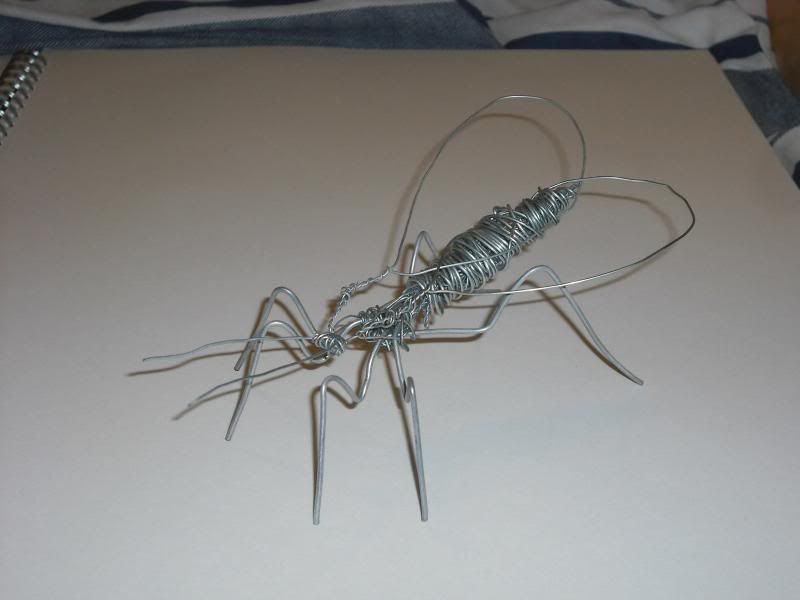
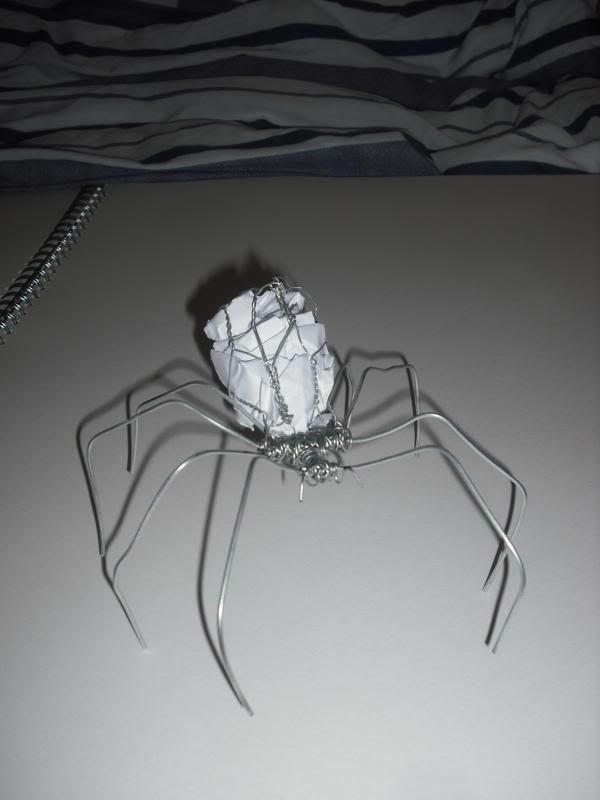
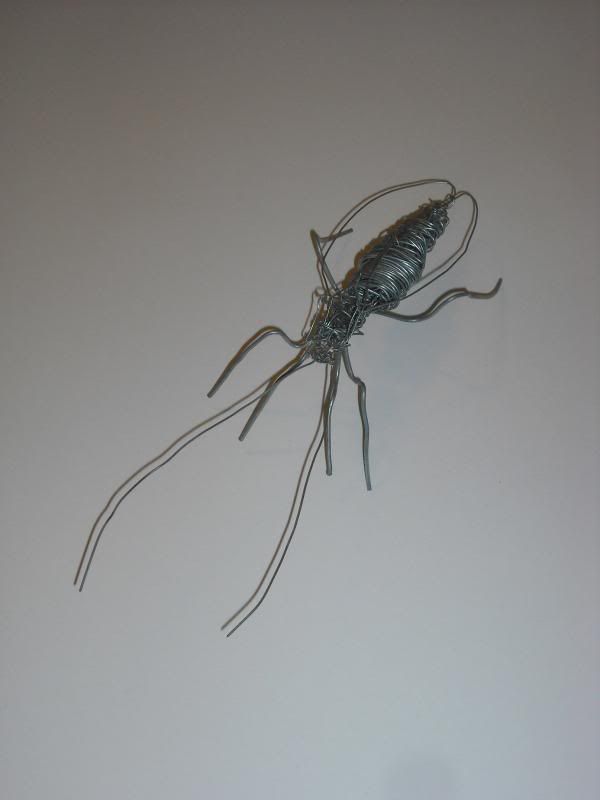
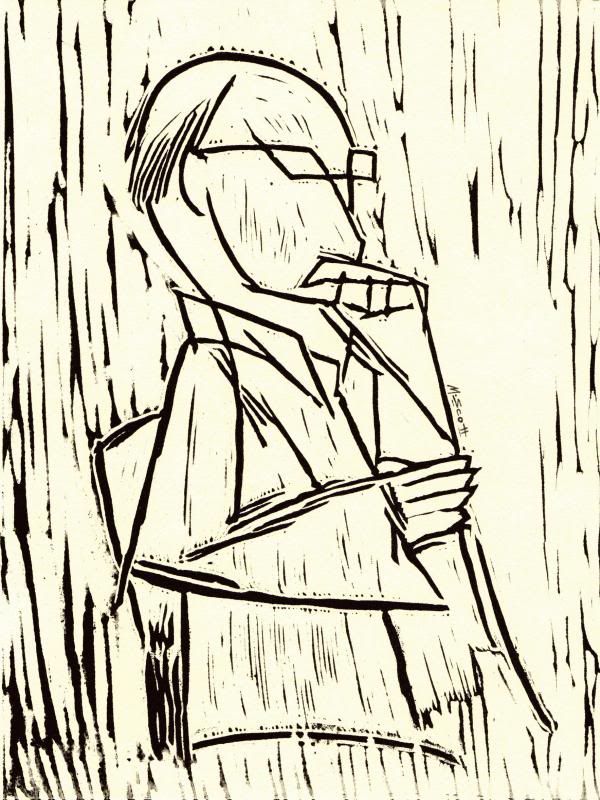
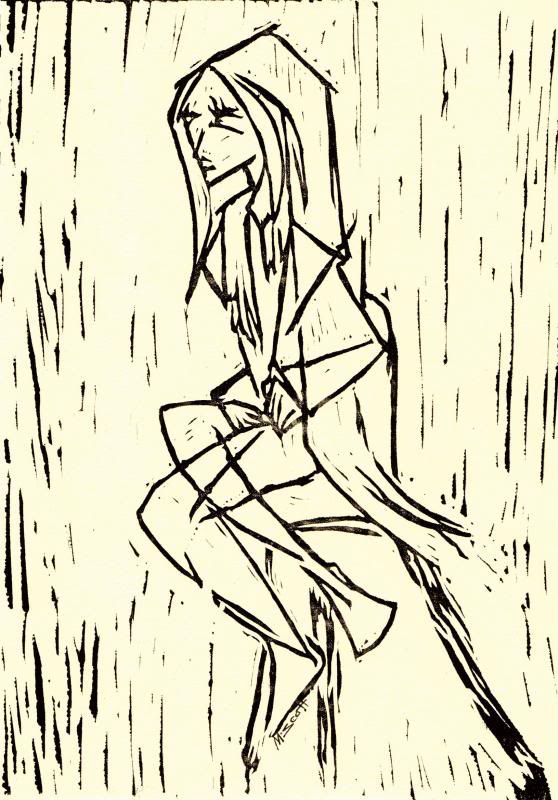
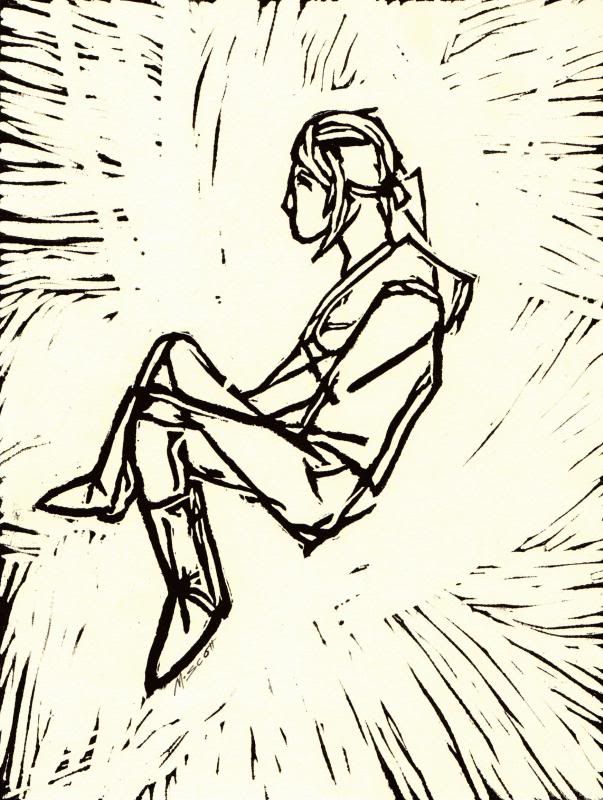
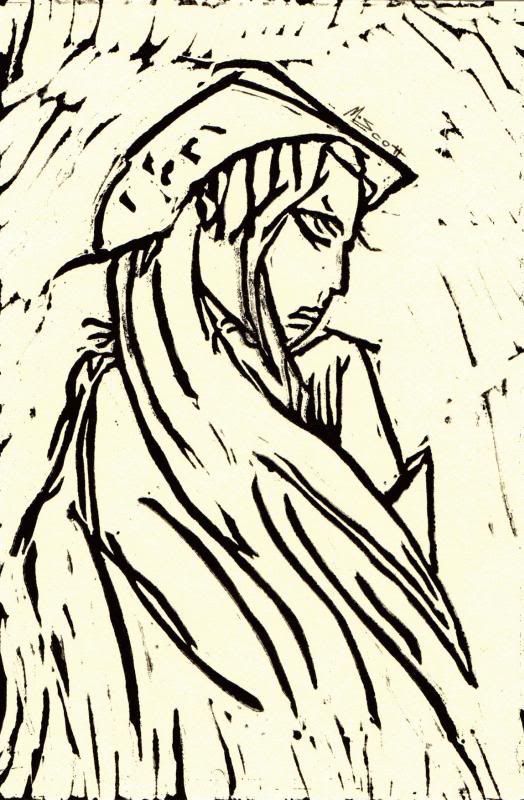
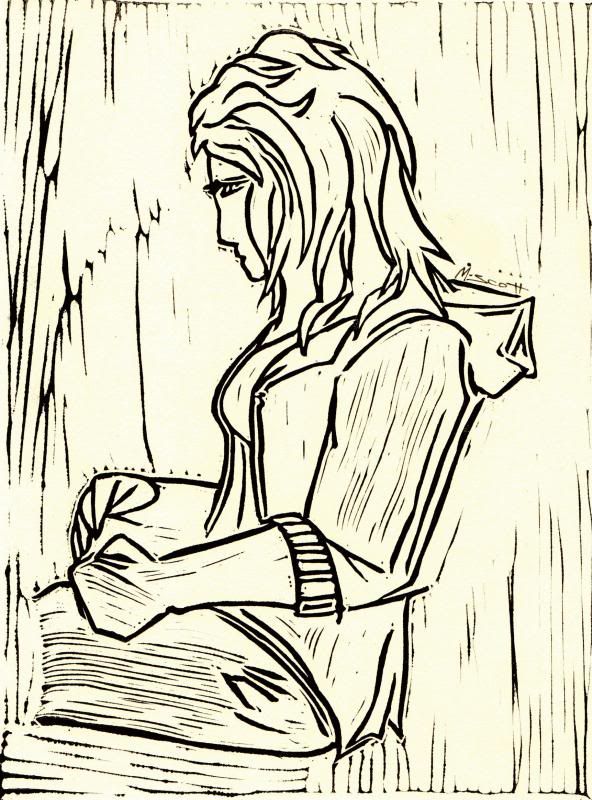
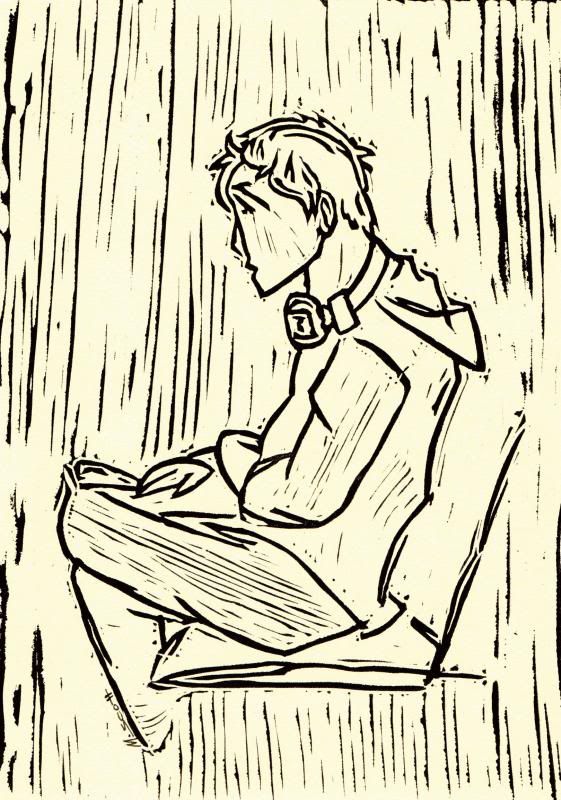
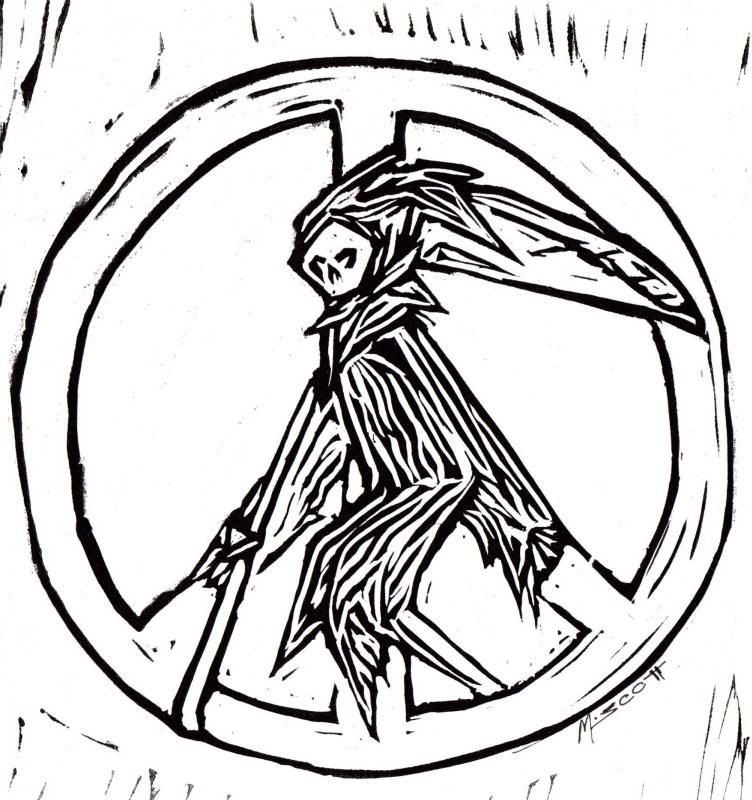


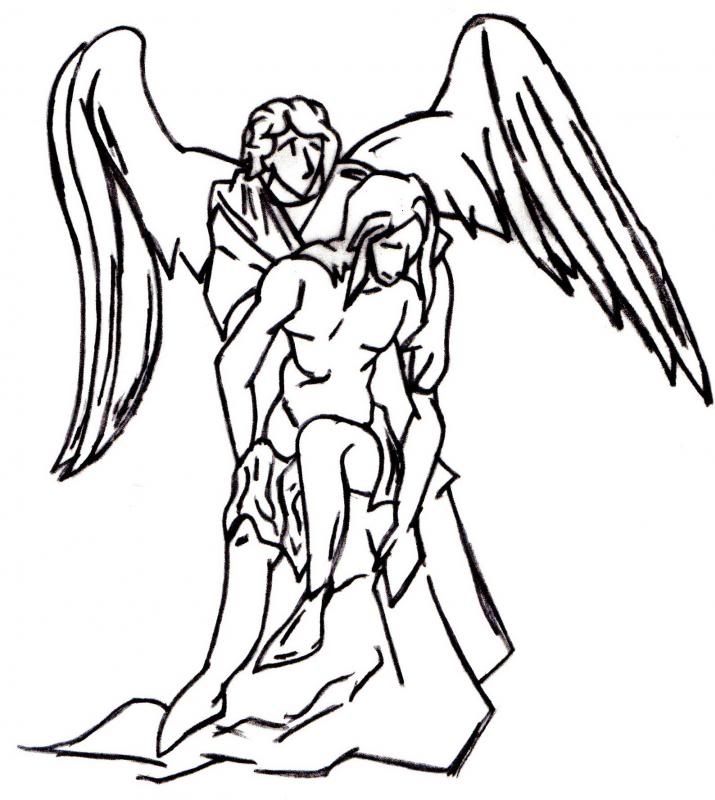
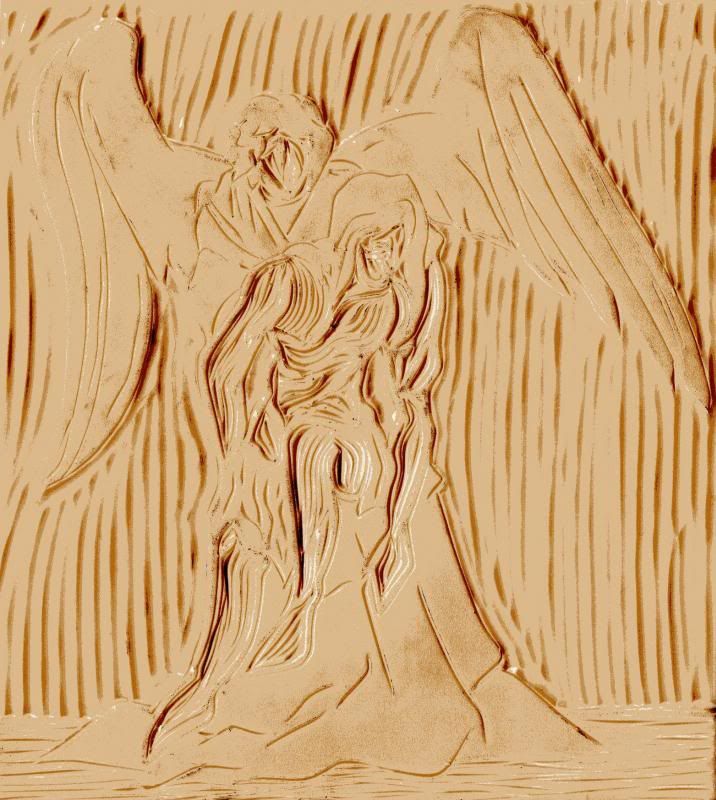
No comments:
Post a Comment